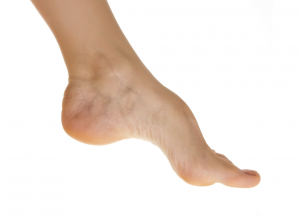
Charcot-Marie-Tooth Disease
Charcot-Marie-Tooth Disease, also known as hereditary motor and sensory neuropathy (HMSN) and peroneal muscular atrophy, is a group of common hereditary disorders that affect the nerves in the feet, legs, hands and arms. It is named after three physicians who discovered the disease in 1886: Jean Martin Charcot, Pierre Marie and Howard Henry Tooth.
Symptoms
The most common symptoms associated with Charcot-Marie-Tooth Disease include weakness in the foot and leg muscles that may result in frequent tripping, difficulty lifting the leg (foot drop), or an abnormal or higher than usual gait. Foot deformities such as hammertoes and high arch foot may develop due to muscle weakness in the feet.
Some people with Charcot-Marie-Tooth Disease experience the lower legs taking on an abnormal shape due to the loss of muscle bulk. Others find that the disease affects their hands and arms, which then results in the loss of fine motor skills in the fingers, wrists and other body parts like the tongue. People with the disease also experience loss of sensation, including the ability to feel hot, cold and pain.
Most cases of Charcot-Marie-Tooth Disease develop in early adolescence but some can occur in mid-adulthood. Progression of the disease is gradual with pain and symptoms varying from mild to severe.
Fortunately, CMT is not a fatal disease and most who develop the condition have a normal life expectancy.
Causes
Charcot-Marie-Tooth Disease is a group of hereditary disorders all caused by inherited mutations of the genes responsible for the function of certain nerves. In some cases, the genetic mutations affect the peripheral nerve axon (the long, thin part of the cell through which nerves send electrical signals), and in other cases it results in damage to the myelin sheath (protective coating) that surrounds the nerve. Both situations result in weaker communication between the extremities and the brain, which results in your body parts not fully receiving orders from the brain. This is what causes frequent tripping, muscle weakness and the inability to feel painful blisters, for example.
There are several types of CMT disease, including CMT1 (caused by deformities in the myelin sheath) and CMTA (a duplication in the gene responsible for producing peripheral myelin protein-22 called PMP-22). Your doctor will know more about which type of CMT might be present.
Treatment
There is no cure for Charcot-Marie-Tooth disease, but there are treatments that can help manage the condition. They include physical therapy to strengthen the muscles and prevent muscle loss, occupational therapy to help with the loss of fine motor skills, low-impact exercises like biking and swimming, orthopedic devices to help maintain mobility and provide stability, wearing shoe inserts to correct gait and taking nonsteroidal anti-inflammatory drugs (NSAIDs) to help with pain.
If severe foot deformities develop as a result of the disease, surgery may be recommended. However, surgery will not improve or reverse muscle weakness or loss of sensation.
As with many incurable conditions, researchers are currently working on ways to permanently eradicate Charcot-Marie-Tooth Disease. Some believe that gene therapy may be an effective alternative in the future.
Notice concerning medical entries:
Articles having medical content shall serve exclusively for the purpose of general information. Such articles are not suitable for any (self-) diagnosis and treatment of individual illnesses and medical indications. In particular, they cannot substitute for the examination, advice, or treatment by a licensed physician or pharmacist. No replies to any individual questions shall be effected through the articles.






